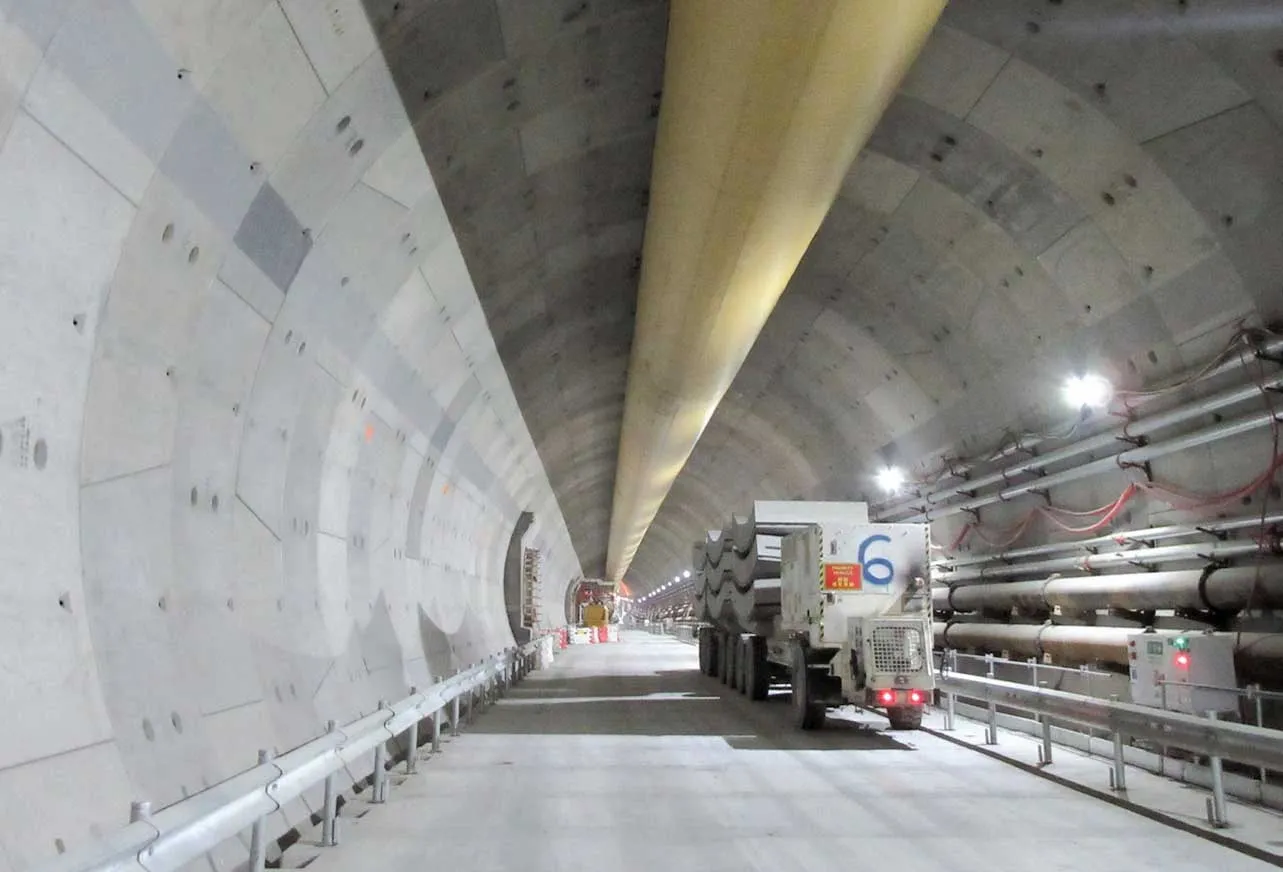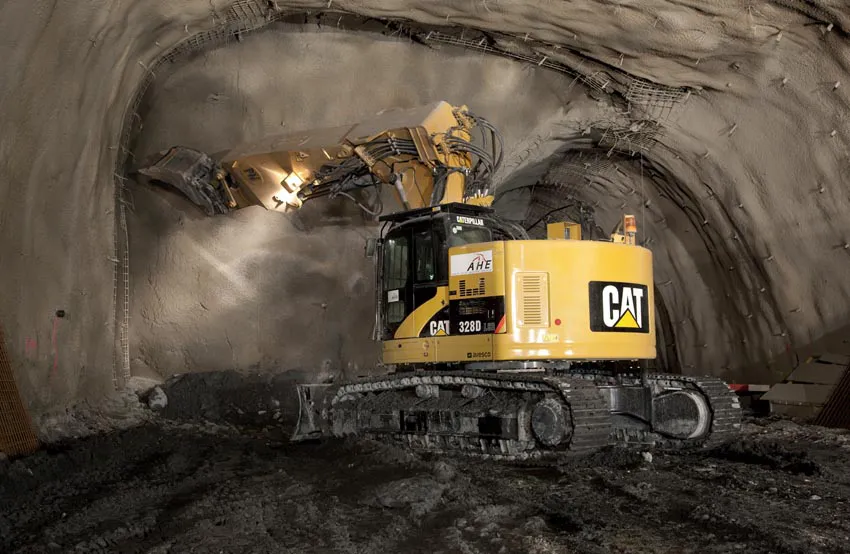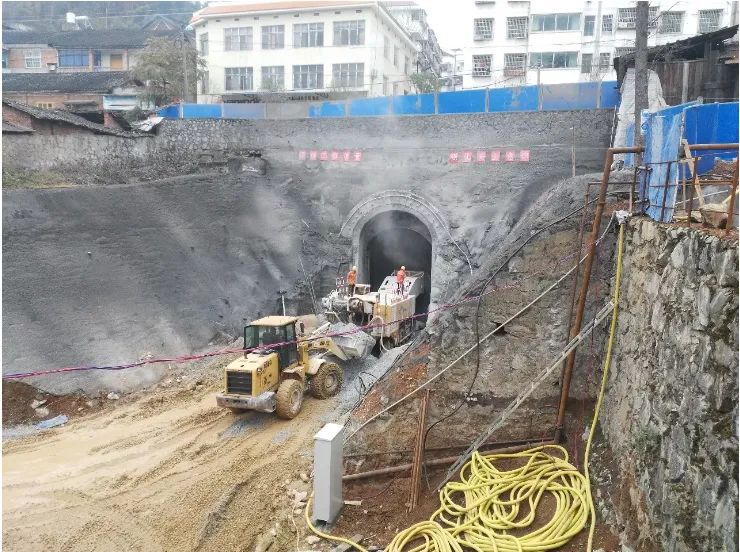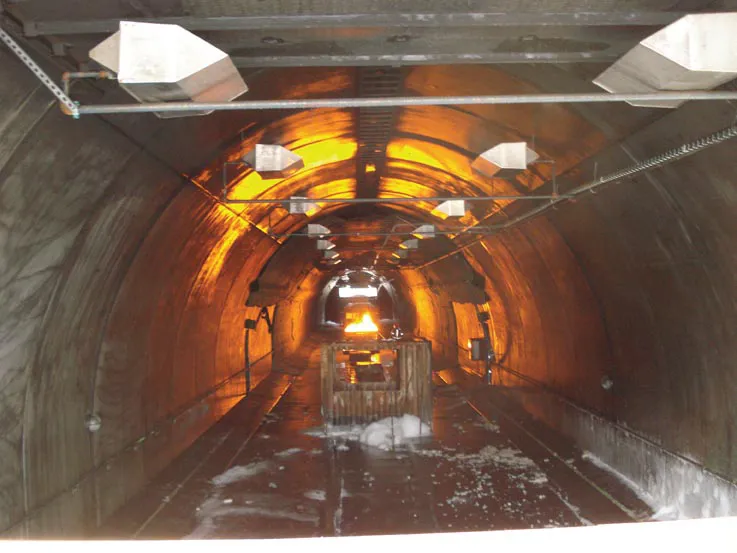It is not only the scale of the Tuen Mun to Chek Lap Kok tunnel that impressed delegates but the number of novel technologies that Dragages Hong Kong, a Bouygues Construction subsidiary, is employing on this project
The 4.6 km tunnel running 60m below sea level is part of a strategic new route linking Hong Kong’s airport on Lantau Island and the New Territories.
January 24, 2017
Read time: 3 mins

It is not only the scale of the Tuen Mun to Chek Lap Kok tunnel that impressed delegates but the number of novel technologies that Dragages Hong Kong, a 979 Bouygues Construction subsidiary, is employing on this project
The 4.6 km tunnel running 60m below sea level is part of a strategic new route linking Hong Kong’s airport on Lantau Island and the New Territories.
Dragage’s contract includes reclamation of 16.5-hectares at the tunnel’s north end to accommodate the north portal and a ventilation building. Work started in 2013 on the nearly US$2.4 project and is due to run until 2018.
Bouygues’ tunnel technical director Bruno Combe told the conference that Dragage cut months from the construction schedule by changing the method of tunnel construction beneath the reclaimed area from cut-and-cover to bored. Since this section of the tunnel must accommodate three lanes of traffic in each of the twin tubes rather than two, Dragages used the world’s largest TBM, with a diameter of 17.6m – bigger than Bertha, the machine which creating the Alaskan Way Viaduct replacement tunnel in the US city of Seattle.
After initial larger sections of tunnel were completed, the2592 Herrenknecht-made TBM was converted to a 14m-diameter machine to dig the southbound tunnel while another Herrenknecht 14m machine is creating the northbound one. The machines require frequent replacements of cutter tools as it makes its way through granite and decomposed granite before getting into softer materials.
Dragages is using its Mobydic system that employs sensors in the disc cutters to take measurements such as speed of rotation and temperature of the discs. As well as indicating disc wear, the information provides insight into the type of rock through which the TBM is churning.
Another Bouygues remote technology, Snake, uses an exploration arm equipped with a high-pressure jet to clean the tools making them ready for inspection and possible replacement. Perhaps the most impressive for delegates was the use of the Telemac, a heavy robotic arm to change cutter tools.
Human intervention is also required to change tools. Because tunnel pressures are high due to the water above it and the fractured rock - up to 6 bar - specialist tunnelling divers must do the work. They remain in pressurised containers on the surface and are shipped to the cutter head in pressurised shuttles. This avoids divers having to go through several compression and decompression cycles during a shift if needed. Apart from saving time, is also lowers health risks associated with the cycles.
Equally as challenging technically is construction of 56 cross-tunnel passages for which Dragages and Herrenknecht devised special 3.85m-diameter mini-TBMs, or pipejacking machines. When combined with launch frames, they can cope with the high pressures. To date the contractor has constructed six cross passages using this method.
The 4.6 km tunnel running 60m below sea level is part of a strategic new route linking Hong Kong’s airport on Lantau Island and the New Territories.
Dragage’s contract includes reclamation of 16.5-hectares at the tunnel’s north end to accommodate the north portal and a ventilation building. Work started in 2013 on the nearly US$2.4 project and is due to run until 2018.
Bouygues’ tunnel technical director Bruno Combe told the conference that Dragage cut months from the construction schedule by changing the method of tunnel construction beneath the reclaimed area from cut-and-cover to bored. Since this section of the tunnel must accommodate three lanes of traffic in each of the twin tubes rather than two, Dragages used the world’s largest TBM, with a diameter of 17.6m – bigger than Bertha, the machine which creating the Alaskan Way Viaduct replacement tunnel in the US city of Seattle.
After initial larger sections of tunnel were completed, the
Dragages is using its Mobydic system that employs sensors in the disc cutters to take measurements such as speed of rotation and temperature of the discs. As well as indicating disc wear, the information provides insight into the type of rock through which the TBM is churning.
Another Bouygues remote technology, Snake, uses an exploration arm equipped with a high-pressure jet to clean the tools making them ready for inspection and possible replacement. Perhaps the most impressive for delegates was the use of the Telemac, a heavy robotic arm to change cutter tools.
Human intervention is also required to change tools. Because tunnel pressures are high due to the water above it and the fractured rock - up to 6 bar - specialist tunnelling divers must do the work. They remain in pressurised containers on the surface and are shipped to the cutter head in pressurised shuttles. This avoids divers having to go through several compression and decompression cycles during a shift if needed. Apart from saving time, is also lowers health risks associated with the cycles.
Equally as challenging technically is construction of 56 cross-tunnel passages for which Dragages and Herrenknecht devised special 3.85m-diameter mini-TBMs, or pipejacking machines. When combined with launch frames, they can cope with the high pressures. To date the contractor has constructed six cross passages using this method.








